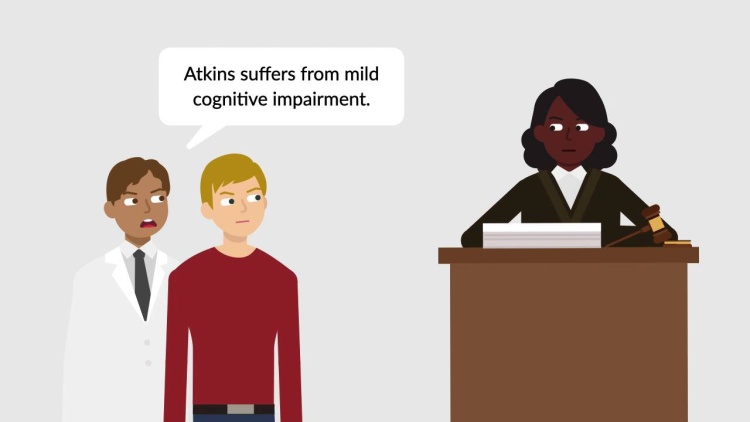Atkins v. Virginia
United States Supreme Court
536 U.S. 304, 122 S. Ct. 2242, 153 L. Ed. 2d 335 (2002)
- Written by Craig Conway, LLM
Facts
Daryl Renard Atkins (defendant) and William Jones, who was armed with a semiautomatic handgun, abducted Eric Nesbitt, robbed him of his money, and then drove him to an ATM, where the pair forced Nesbitt to withdraw additional cash. Thereafter, Atkins and Jones shot Nesbitt eight times, killing him. Atkins and Jones were charged with abduction, armed robbery, and capital murder. In the penalty phase, Dr. Evan Nelson, a forensic psychologist and witness for the defense, testified that Atkins was mildly intellectually disabled. Nelson’s conclusion was based on interviews conducted with people who knew Atkins, a review of his school and court records, and an IQ test administered to Atkins with a score of 59. A person with an IQ of 100 is considered to have an average level of cognitive functioning. Atkins was convicted of abduction, armed robbery, and capital murder and sentenced to death. Atkins appealed, and the United States Supreme Court granted certiorari to review.
Rule of Law
Issue
Holding and Reasoning (Stevens, J.)
Dissent (Scalia, J.)
Dissent (Rehnquist, C.J.)
What to do next…
Here's why 899,000 law students have relied on our case briefs:
- Written by law professors and practitioners, not other law students. 47,000 briefs, keyed to 994 casebooks. Top-notch customer support.
- The right amount of information, includes the facts, issues, rule of law, holding and reasoning, and any concurrences and dissents.
- Access in your classes, works on your mobile and tablet. Massive library of related video lessons and high quality multiple-choice questions.
- Easy to use, uniform format for every case brief. Written in plain English, not in legalese. Our briefs summarize and simplify; they don’t just repeat the court’s language.





